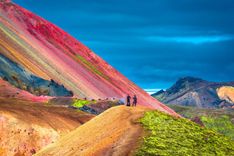But it first pays to know the rules. Because in Iceland, the right spa etiquette is taken deadly seriously. Here are five dos and don’ts to bear in mind.
Don’t forget to wash yourself
It may sound obvious, but unlike the rest of Europe, where most bathers make-do with a quick shower-room rinse, Icelanders have a set, strict routine when going for a dip that must be followed to the letter.
First, read the rules. They’re pinned to every changing room wall and notice-board, as well as being published in English, French, German and Danish, so you really have no excuse not to follow them.
Second, get washing. Scrub your head, armpits, feet and groin with soap beforehand, and – most importantly – do it in your birthday suit, not bathing suit. A quick rinse just won’t do, especially because most geothermal pools use freshwater and far lower levels of chlorine, even at the Blue Lagoon at Reykjanes.
And having just read the rules, you have no excuse not to get naked. You have been warned.
Rough Guides tip: Bathing in the hot springs promises an unforgettable experience. Explore our list of the best Icelandic springs and get inspired for a trip to Iceland.











.jpg)